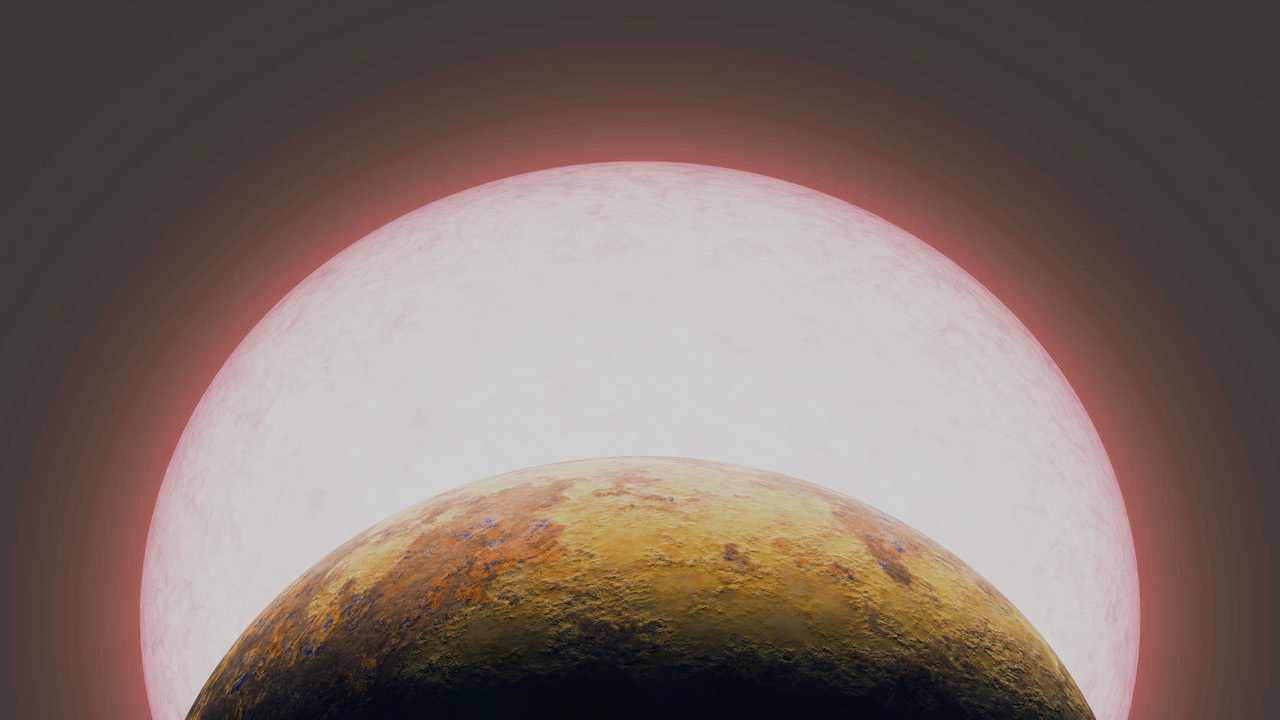This scorching 'super-Earth' exoplanet is one of the most massive ever discovered
Researchers found this world through the transit method.

As astronomers add to their known population of distant planets — called exoplanets — they expand their understanding of how Earth's rocky relatives appear around other stars. And their surveys often come across oddballs, like one newly-discovered planet coated in molten magma with a "year" that only lasts half a day.
The discovery, called TOI-1075 b, was spotted in observations from NASA's Transiting Exoplanet Survey Satellite (TESS) spacecraft. Data from this four-year-old mission revealed that TOI-1075 b has a superheated surface of about 1,922 degrees Fahrenheit (1,050 Celsius). These extreme conditions occur because of the planet's proximity to its parent star, a small, red-orange star about 200 light-years away from Earth. But in addition to the planet's scorching climate and ultra-short orbit — which takes just 14.5 hours — it's fascinating for another big reason: TOI-1075 b is one of the most massive of its exoplanet class.
"New data shows that TOI-1075 b is one of the most massive super-Earths discovered so far," NASA officials wrote in a Nov. 8 announcement of the discovery.
Related: 10 amazing exoplanet discoveries
Researchers often label exoplanets with descriptors that compare these distant worlds to the planets closer to home. Gas giants that orbit close to their parent stars are called "hot Jupiters," for instance.
Super-Earths intrigue astronomers because they are thought to be common in the Milky Wa, even though there aren't any in the solar system.
If TOI-1075 b were closer to Earth, however, and humans could visit, they'd notice that their weight on this planet's surface would triple because TOI-1075 b is nearly 10 times more massive than Earth.
Get the Space.com Newsletter
Breaking space news, the latest updates on rocket launches, skywatching events and more!
Researchers found this world through TESS' transit method. To detect faraway celestial bodies like TOI-1075 b, the spacecraft scans the night sky for signs of brightness changes. If a star's light periodically dims, it may indicate the presence of an exoplanet because each time the world orbits the star and passes in front of it with respect to Earth, it blocks a little bit of starlight.
This technique allowed the mission to observe its 5,000th exoplanet candidate, a special milestone that TESS celebrated earlier this year.
And each discovery has its value. NASA says that TOI-1075 b, in particular, will help scientists to fine-tune models of planet formation. "That, in turn, will help them predict just what kinds of atmospheres super-Earths and other planet types possess, or whether they have atmospheres at all."
Follow Doris Elin Urrutia on Twitter @salazar_elin. Follow us on Twitter @Spacedotcom and on Facebook.
Join our Space Forums to keep talking space on the latest missions, night sky and more! And if you have a news tip, correction or comment, let us know at: community@space.com.

Doris is a science journalist and Space.com contributor. She received a B.A. in Sociology and Communications at Fordham University in New York City. Her first work was published in collaboration with London Mining Network, where her love of science writing was born. Her passion for astronomy started as a kid when she helped her sister build a model solar system in the Bronx. She got her first shot at astronomy writing as a Space.com editorial intern and continues to write about all things cosmic for the website. Doris has also written about microscopic plant life for Scientific American’s website and about whale calls for their print magazine. She has also written about ancient humans for Inverse, with stories ranging from how to recreate Pompeii’s cuisine to how to map the Polynesian expansion through genomics. She currently shares her home with two rabbits. Follow her on twitter at @salazar_elin.









